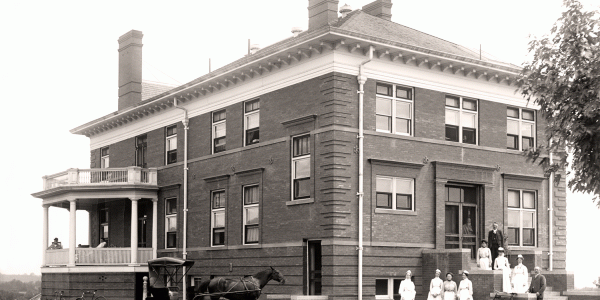
If Earl Morris (Psych1914; MA1916) wasn’t the inspiration for Indiana Jones, you could be forgiven for thinking so: He looked the part.
A preeminent archaeologist of the American Southwest’s Four Corners area and a seminal figure in the study of pre-European human societies in the broader region, Morris traveled to far-flung dusty digs in a truck called “Old Joe,” a fedora shadowing his face.
“There are very few places I’ve worked where Morris wasn’t there before me,” said Stephen Lekson, curator of archaeology at the University of Colorado Museum of Natural History and a professor of anthropology.
Understanding the early Southwest seems to have been destiny for Morris, who was born in New Mexico in 1889 and reported finding his first artifact, a dipper bowl, at age three.
During a four-decade-plus career, he excavated thousands of artifacts and many ruins, supported by museums, scientific organizations and universities, including CU, leading to a scrupulous portrait of the region before European settlement.
The museum today contains thousands of items Morris unearthed, among them flutes, sandals, baskets, bags, pottery and weapons, Lekson said.
Morris studied various native societies throughout the Southwest and Central America, and was especially influential in revealing the story of the ancestral Pueblo Indians, once called Anasazi. He’s also well known for his discovery and reconstruction of the Great Kiva, or great room, at what today is Aztec Ruins National Monument in New Mexico. (His dwelling there is now the visitor’s center).
Morris worked closely with his first wife, archaeologist Ann Axtell Morris, who in 1933 wrote a general interest book called Digging in the Southwest.
Since the 1981 debut of Steven Spielberg’s Raiders of the Lost Ark, the first Indiana Jones film, various sleuths have argued that Hiram Bingham III, who rediscovered Machu Picchu, seems to match the character most closely. But George Lucas, who wrote the film’s story, has said the character was based on a type — “a soldier of fortune in a leather jacket and that kind of hat” common in 1930s serial films — not on a specific person.
So, Earl Morris, who died in Boulder in 1956, wasn’t a pop culture archaeologist. He was a real one, and among the best.
Photo ©University of Colorado Museum of Natural History





